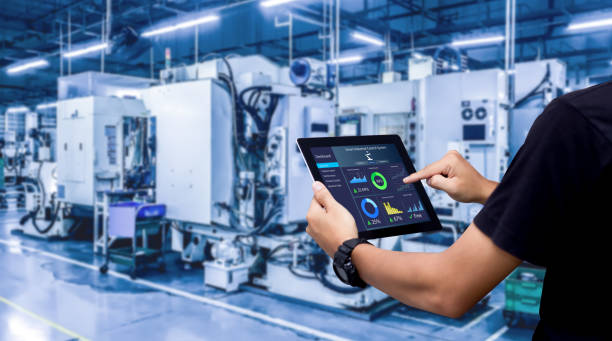Measuring plant performance with unified production metrics
Unified production metrics help organizations translate disparate shop-floor signals into consistent indicators of throughput, quality, energy use, and downtime. A clear, consistent metric set supports decision making across teams—from operations and maintenance to supply chain and sustainability—by providing a shared language for plant performance.

Measuring plant performance with unified production metrics
Modern manufacturing environments generate signals from many sources: machines, control systems, enterprise software, sensors, and human inputs. To assess how a plant is performing you need a consistent metric set that spans throughput, quality, utilization, energy, and inventory turns. A unified approach reduces ambiguity, makes benchmarking possible, and enables automated dashboards and analytics that deliver timely insights for operations, maintenance, and leadership.
How does manufacturing data feed unified metrics?
Manufacturing systems produce discrete events and continuous telemetry. Converting those raw feeds into meaningful metrics requires consistent definitions and timestamps: what constitutes a production cycle, how quality checks are recorded, and how downtime reasons are categorized. Digitization projects that standardize event naming, cycle boundaries, and product identifiers make it possible to aggregate across lines and plants. When manufacturing data is normalized, metrics such as overall equipment effectiveness (OEE), yield by SKU, and cycle time become comparable and actionable across the business.
How can automation improve metric collection and accuracy?
Automation reduces manual logging errors and ensures that data is captured in real time. Integrating PLCs, MES, and SCADA with middleware or IIoT platforms can stream production counts, statuses, and alarms into a central store. Automated tagging at source — for example, recording the active recipe or operator shift — adds context that makes metrics richer. Automation also enables continuous validation rules and anomaly detection to flag suspicious values, improving the reliability of KPIs used for performance reviews and continuous improvement initiatives.
How should predictive maintenance align with unified metrics?
Predictive maintenance introduces condition-based indicators like vibration trends, bearing temperature, and predicted remaining useful life. To integrate these with production metrics, maintenance outputs must share the same timebase and asset identifiers as production records. This lets teams correlate degradation signals with drops in throughput, quality deviations, or repeated stoppages. Embedding predictive maintenance outputs in performance dashboards helps prioritize interventions that maximize uptime and avoid unnecessary repairs, improving both resilience and cost-effectiveness.
How does telemetry and analytics turn data into insights?
Telemetry supplies the raw streams; analytics turns them into context-aware metrics. Time-series databases, streaming analytics, and batch modeling each play a role: time-series for immediate telemetry aggregation, streaming for near-real-time alerts, and batch for trend analysis and model retraining. Robust analytics pipelines apply smoothing, outlier handling, and aggregation rules so that reported KPIs reflect consistent measurement practices. Combining telemetry with business data — orders, inventory, and workforce schedules — creates composite metrics that better reflect plant performance in commercial terms.
How do sustainability and energy metrics integrate into performance views?
Energy use, carbon intensity, and material waste are increasingly core metrics alongside throughput and quality. Integrating submeters, production timestamps, and material flow data enables per-unit energy and per-unit waste metrics. When sustainability metrics are unified with production KPIs, teams can identify trade-offs — for instance, faster cycles that increase scrap or energy spikes during certain shifts — and prioritize modernization or process changes that improve both productivity and environmental outcomes.
How should leadership balance workforce, inventory, and cybersecurity considerations?
Unified metrics must respect human factors: workforce availability, skill levels, and shift patterns significantly influence performance metrics. Inventory and logistics influence material availability and lead to false downtime if parts are missing. Cybersecurity and data governance ensure metric integrity and protect sensitive operational details. Clear access controls, data lineage, and validation reduce the chance that metric-driven decisions are based on compromised or erroneous data. A balanced metric framework surfaces operational realities while protecting people and critical information.
Conclusion
A unified production metric set ties together manufacturing, automation, maintenance, telemetry, and analytics so organizations can measure plant performance consistently. By standardizing definitions, integrating condition-based maintenance outputs, and adding energy and workforce context, plants can create dashboards that support resilient, sustainable decision making. Consistent metrics enable clearer accountability, better benchmarking, and more effective modernization over time.





